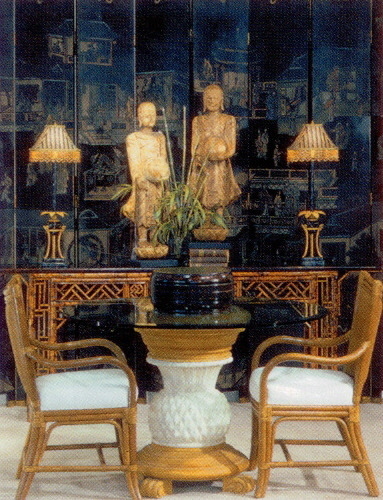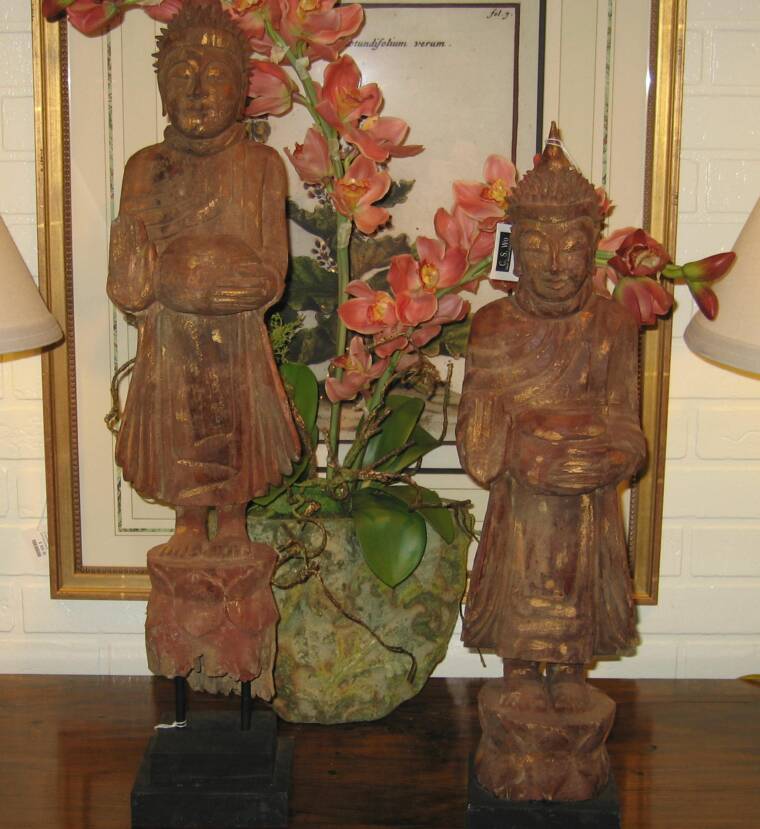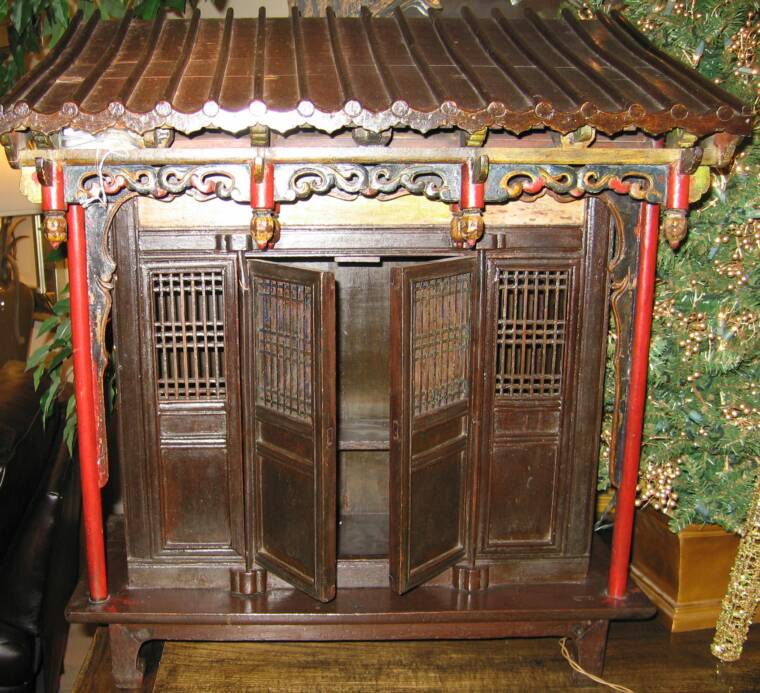Chinese Authentic Antique Treasures
Serafina has developed close relationships with many worldwide wholesale buyers of Chinese antiques and replicas. As the popularity of exquisite and refined Chinese antiques continues to soar, so does the desire to uncover these treasures and incorporate them into modern, art deco' and traditional spaces. Whether it is wedding cabinets with carved etchings, alter tables and side tables with ornate designs, stools and chairs designed with a "Confucian posture", decorative trunks and tea tables, or black lacquered cabinets and screens with gold paintings, Serafina's association with a renowned reputable supplier of Chinese antiques that are found throughout the world, are brought back to the United States and offered to Serafina for her clients.
Although many Chinese antiques may appeal to be shiny and in somewhat good condition, many of the antiques that Serafina can obtain are 100 to 300 years old. Chinese furniture design evolved
very slowly. So, while certain elements of style can allow an antique dealer to say that a piece is from the late 18th century, a more accurate characterization might be a period of time.
Serafina's passion around Feng Shui and the Yin and the Yang is best represented in the Chinese antiques that she uses. The Chinese antique furniture she finds is predominately from the late Qing Dynasty. Furniture from this period is vastly different from the highly ornate, ebony colored pieces that we think of as traditional or classical Chinese antiques. Historically, the Qing dynasty, which began in 1644, was the last dynasty in China's long history of rule by emperors. This was a time of expanding trade and the rise of the new and prosperous merchant class, which had previously occupied the bottom rung of the status ladder. The ruling elite settled comfortably at the top, followed by the peasants and artisans, and then the lowly merchant. As the wealthy merchant class grew, they wanted homes and furniture to signify their new status. Unlike the ruling elite, these new consumers did not feel constrained by imperious rules about how furniture should look. They wanted something different from traditional Chinese design. What they produced was termed "vernacular", a culture marquee describing non-imperial China. For furniture, the term tends to suggest the rustic, simple,and ordinary. It was furniture used in the practical sense of what furniture was designed to be.
Serafina's suppliers are reputable and knowledgeable antiques buyers who can speak authoritatively about the background of a piece where it comes from, for what it was used, and the history of the period itself. The pieces are purchased unrestored by the buyer and then using Chinese craftsmen to ensure quality workmanship in the repair and refinishing process of the furniture. Given the poor condition of most Chinese antiques, the goal becomes not restoration, but refinishing the product to preserve the quality and value of each piece resulting in a beautiful piece of history which Serafina can incorporate into the designs for her clients.
Click on pictures to see more


